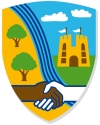Head lice and nits are very common in young children and their families. They do not have anything to do with dirty hair and are picked up by head-to-head contact.
Where a child is identified as having nits we will generally message children from the class or year group.
Anyone can get head lice, mainly through direct head-to-head contact but also from sharing hats, brushes and other personal items. Head lice do not reflect poor hygiene or social status. Parents are encouraged to check for headlice regularly throughout the year.
Where a case has been identified in school we encourage parents to help prevent the spread of this by checking their child(ren) daily for the next few weeks, and on a regular basis thereafter. Lice infestation is much easier to treat if caught early.
The only way to be sure someone has head lice is by finding live lice. You can do this by combing their hair with a special fine-toothed comb (detection comb). You can buy these online or at pharmacies.
If you should discover a case of head lice, please notify us. There’s no need to keep your child off school if they have head lice. We would also encourage you to notify the parents of your child’s friends or playmates; this is the best way to protect your family and community and reduce the spread.
If you have any questions or need assistance, please contact the main office. You can get further information at https://www.nhs.uk/conditions/head-lice-and-nits/
How to get rid of headlice?
There are lotions but the most effective way to eliminate lice is through wet combing.
Wet combing should be done on days 1, 5, 9 and 13 to remove adult lice and also catch any newly hatched head lice before they can lay further eggs.
A check should then be made again that everyone’s hair is free of lice on day 17.
Here is a useful video below showing how to wet comb; remember if lice are spotted – this needs to repeated on day 5, 9 and 13 with a final check on day 17.
